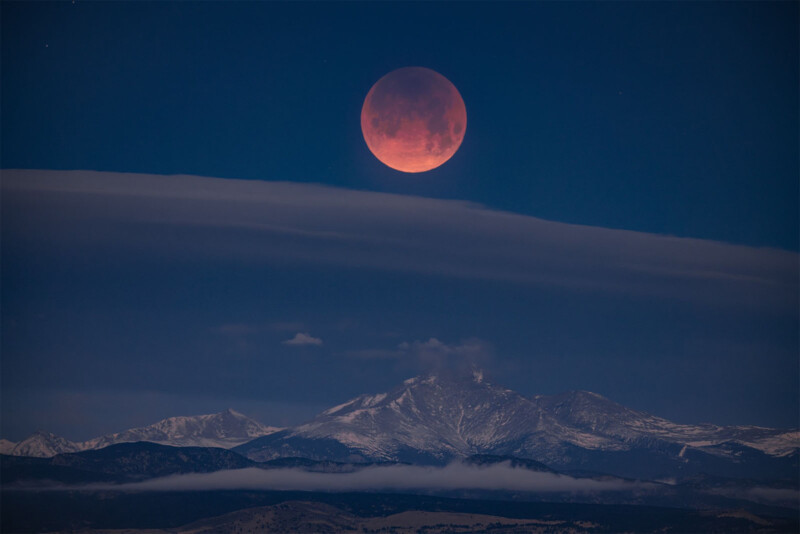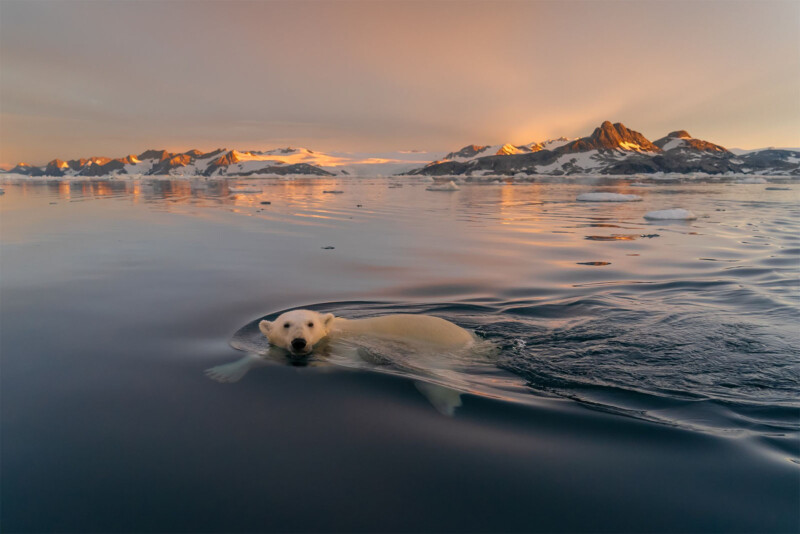Pro Photographer’s Best Last-Minute Tips for Shooting the Eclipse
![]()
National Geographic photographer, Canon Explorer of Light, and friend of PetaPixel Keith Ladzinski is preparing for the total solar eclipse on April 8th and has plenty of tips to help other photographers capture great shots next Monday.
Ladzinski is no stranger to solar eclipses, or lunar ones for that matter, having shot numerous ones over the weeks, including the last total solar eclipse in the United States in 2017. Ladzinski flexed his creative muscles then, too, creating an incredible shot of a man highlining across a canyon in Jackson Hole, Wyoming.
This time around, Ladzinski has about a half-dozen different photos in mind and will be shooting with five cameras at a friend’s farm in Indiana, well inside the path of totality, which stretches from Texas to Maine. He’ll also be doing the classic close-up telephoto shot of the Sun during totality, probably with a Canon RF 1200mm f/8 super-telephoto lens.
“I’m going to use a 1200mm and compress it and just get that big, beautiful eclipse that we all love,” Ladzinski tells PetaPixel, adding that he also wants to get more environmental, wide-angle shots that help contextualize the eclipse. He has some ambitious plans with specific foreground elements and artificial lighting, including a bonsai tree that he hopes to make look larger than it is, creating an epic eclipse portrait.
![]()
“I love trees. I’ve done a variety of work for National Geographic on trees… and a lot of those shots I lit because I just really like to sort of almost shoot them like a portrait,” the photographer says.
Simplicity and Planning Are Key Ingredients for Eclipse Success
He has some other ideas using different props and creative effects filters, but it is probably best to keep things simple for people who have never shot an eclipse before. And above all else, plan.
Photographers will have less than four minutes of totality to work with on Monday, and Ladzinski emphasizes that it will go by very quickly.
“I’m trying to make sure that the tech is ironed out so we’re not making too many on-the-fly decisions… but I’m sure there’ll be a few,” Ladzinski says. “I don’t know what it is, but whenever I go shoot anything, I’m like, ‘Let’s try to add some pressure into this.’ I don’t know why,” Ladzinski chuckles.
“Sometimes it just brings out something bigger creatively,” the experienced photographer says of the self-inflicted pressure.
However, even though he has plenty of experience working in stressful environments, Ladzinski is determined to leave as little to chance as possible come the eclipse.
“I think the smartest thing to do is dry runs. Go out at blue hour, when you can begin to see stars — try to get as close to what the light will be like during the eclipse,” Ladzinski says.
“Even if you plan to simply use a telephoto or wide-angle lens and capture the eclipse itself, do dry runs with your filters,” Ladzinski recommends. And, of course, be sure to use the proper solar filters.
“You have to have an understanding of your equipment. If you have an idea of the shot you want, try to run through it as best you can ahead of time,” the photographer says.
“That four minutes is going to blow right by,” Ladzinski says, emphasizing that the more preparation you can do ahead of time, the better.
Elevating Your Eclipse Shots With Creative Compositions
There is a lot you can do ahead of time, too, including planning your compositions. Ladzinski loves including trees or geological formations in his frames to help make photos more visually attractive. It’s great to get just a shot of the Sun during the eclipse, but if you want something more unique to your personal experience, find ways to incorporate your surroundings.
You can scope these out ahead of time, too, and with the aid of apps like PhotoPills, you can see precisely where the Sun will be in the sky when it experiences totality.
For photographers who are ambitious enough to try an eclipse composite shot — the classic scene of the partial eclipse leading to totality and then back to partial in a single time-blended frame — this type of visualization is essential before the big day. As for exposures, which can be tricky, Ladzinski says to do the best you can and bracket exposures to ensure you’ve got as much chance of success.
What If You Aren’t In the Path of Totality?
Although the total solar eclipse is the big story, many Americans won’t be able to travel within the path of totality for many reasons. However, photographers outside the path of totality shouldn’t be discouraged, as there are still opportunities to get some great photos.
“Go find something cool, like a beautiful tree or cool piece of architecture, whatever it is you want. I would anchor the eclipse around something. It is [amazing] to just see it in that crescent moon kind of look. That’s rad,” Ladzinski says. “But you can elevate that by using foreground elements, elements on the side of your frames, things along those lines.”
![]()
Environmental Photos: Photographing the Story of the Eclipse
With such a significant eclipse event on the horizon, there are plenty of ways to get amazing photos that don’t exclusively focus on the eclipse itself.
“If you have a wide-angle lens and you want to see everybody looking up at it at once, that’s a great frame,” says Ladzinski.
“Keep in mind the challenges that you’re going to have from an exposure point of view, though,” Ladzinski warns. “Depending on how partial or total the event is while it’s happening, in which case you can do things like you split grads where you can put them across if you have a wide-angle lens so you can still have your appropriate solar filter on.”
“If you’re in a big, crowded space, integrate people into the frame,” he says. “This is a cool opportunity to bring a little bit of yourself into the frame in terms of your tastes or the things you want to highlight.”
Sometimes, the story of the event can include something other than the event itself. A fantastic idea is getting a portrait of someone with the eclipse reflected in their glasses, or something like that.
Plan B, C, and Maybe Even D
Weather is something Ladzinski is spending a lot of his time thinking about leading up to the eclipse. What will he do if the weather doesn’t cooperate? What shots can he still get if the conditions aren’t ideal?
“Be prepared to be nimble with your exposures,” he recommends. “If you are getting clouds that are passing by and you’re looking for quick windows, you’ve got to pay attention and be ready to adjust very quickly.” Being familiar with your camera’s controls and how to adjust your settings is crucial in situations like that.
If it’s completely overcast, there is little you can do. “I wish I had a more effervescent answer, but man, that’s just going to kind of suck.”
So, when it comes time for the eclipse, photographers should cross their fingers for totally clear skies, of course, but partial clouds do not spell doom. You can capture amazing photos with some cloud cover during the eclipse. However, there aren’t many opportunities if the sky is gray and overcast.

“That’s the curse of location shooting,” Ladzinski sighs, acknowledging that the forecast for his planned location isn’t looking perfect right now.
“That’s the question I’m constantly asking myself: ‘What is my secondary plan here? What is my tertiary plan? ‘ There’s a world where, if clouds are thin enough or moving in and around the eclipse, you can still achieve a really cool shot.’
Final Advice for Photographing the Eclipse
Ladzinski says that, above all else, photographers should do everything they can before the eclipse to give themselves the best possible chance of success. Test your filters, know your equipment, and plan your photos.
All bets are off when the Moon blocks out the Sun, creating that short-lived and beautiful total eclipse. The nearly four minutes will be gone in a flash, and the less you leave to chance during that time, the better.
But it’s also important to remember to enjoy the moment. “Definitely carve out some time where you can just sit there and look at it,” Ladzinski says.

As always, protect your camera and, more importantly, your eyes.
To see more from Keith Ladzinski, visit his website and follow the photographer on Instagram.
Image credits: © Keith Ladzinski